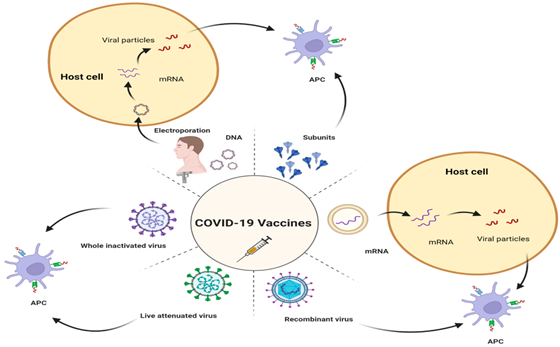

Context
The 2023 Nobel Prize in Physiology or Medicine has gone to scientists Katalin Kariko and Drew Weissman, whose work enabled the development of mRNA vaccines against Covid-19.
What is mRNA?
- Messenger RNA (a mRNA) is a type of single-stranded RNA involved in protein synthesis.
- They are made from a DNA template during the process of transcription.
- The role of mRNA is to carry protein information from the DNA in a cell’s nucleus to the cell’s cytoplasm (watery interior), where the protein-making machinery reads the mRNA sequence and translates each three-base codon into its corresponding amino acid in a growing protein chain.
- So mRNA really is a form of nucleic acid which helps the human genome, which is coded in DNA, to be read by the cellular machinery.
Contribution of Nobel Prize winner scientists:
- Karikó and Weissman realised that the problem with lab-grown genetically engineered mRNA is that the body’s dendritic cells recognise them as a foreign substance, and release inflammatory signalling molecules against them.
- To investigate this, they produced different variants of mRNA, each with unique chemical alterations in their bases, which they delivered to dendritic cells.
- The results were striking: The inflammatory response was almost abolished when base modifications were included in the mRNA.
- This later on became the basis for development of mRNA vaccines which helped during the COVID recovery.
About mRNA vaccines:
- Background: This technology had been known since the 1980s, but had not been perfected enough to create vaccines at a viable scale.
- Basically, instead of putting an inactivated virus in the body to activate an immune response, vaccines using this technology use messenger Ribonucleic Acid, or mRNA, to deliver a message to the immune system.
- Genetically engineered mRNA can instruct cells to make the protein needed to fight a particular virus.
- Working:
- By using this mRNA, cells can produce the viral protein.
- As part of a normal immune response, the immune system recognizes that the protein is foreign and produces specialized proteins called antibodies.
- Once produced, antibodies remain in the body, even after the body has rid itself of the pathogen, so that the immune system can quickly respond if exposed again.
- Antibodies help protect the body against infection by recognizing individual viruses or other pathogens, attaching to them, and marking the pathogens for destruction.
- If a person is exposed to a virus after receiving mRNA vaccination for it, antibodies can quickly recognize it, attach to it, and mark it for destruction before it can cause serious illness.

How are mRNA vaccines made?
- To make an mRNA vaccine, scientists must first identify a protein on the outside of the virus that the body’s immune response will respond to (the “target” protein).
- The protein they choose must be sufficiently different from proteins on the outside of the body’s own cells, so the immune system only attacks the virus.
- They then identify the DNA that has the information for making the target protein.
- Scientists use the DNA to produce the mRNA for the target protein.
- Once enough mRNA has been made, the DNA is broken down to ensure that only the mRNA is packaged in the vaccine.
- The speed and efficiency of this process can make large amounts of mRNA in a short period of time.

